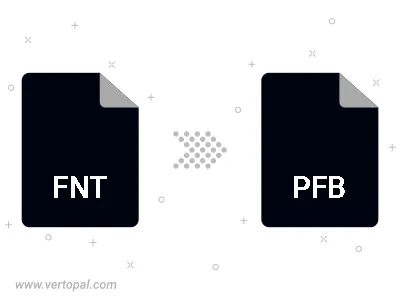Convert FNT to PFB
Convert FNT fonts to PFB format, edit and optimize fonts online and free.

The FNT file extension stands for Windows Font File and is used by the Windows operating system to store bitmap fonts. Introduced with Windows 3.x, FNT files contain graphical representations of characters, including their shapes, sizes, and positions within a bitmap grid. While they were essential for early Windows GUIs, FNT files have largely been replaced by TrueType (TTF) and OpenType (OTF) fonts. However, they remain relevant for legacy applications and certain system-level operations.
The PFB (Printer Font Binary) file extension is associated with Adobe's Type 1 fonts, primarily used in Windows operating systems. These files store font data in a compact binary format, which includes glyph data and encryption for protection. Introduced in the 1980s, PFB files were part of Adobe's PostScript technology, enabling high-quality digital typesetting. They work alongside PFM (Printer Font Metrics) files, which contain character measurements. PFB files are essential for precise font rendering in professional printing and digital design.
Select any FNT file from your device to start uploading it.
For advanced customized conversion, use FNT to PFB tools and click Convert.
Let the file convert, then you can download your PFB file right afterward.

Convert FNT to PFB, re-encode to a different character set, and compact font by removing empty character slots.
Convert FNT to PFB in a unicode range selection.
To change FNT format to PFB, upload your FNT file to proceed to the preview page. Use any available tools if you want to edit and manipulate your FNT file. Click on the convert button and wait for the convert to complete. Download the converted PFB file afterward.
Follow steps below if you have installed Vertopal CLI on your macOS system.
cd to FNT file location or include path to your input file.Follow steps below if you have installed Vertopal CLI on your Windows system.
cd to FNT file location or include path to your input file.Follow steps below if you have installed Vertopal CLI on your Linux system.
cd to FNT file location or include path to your input file.